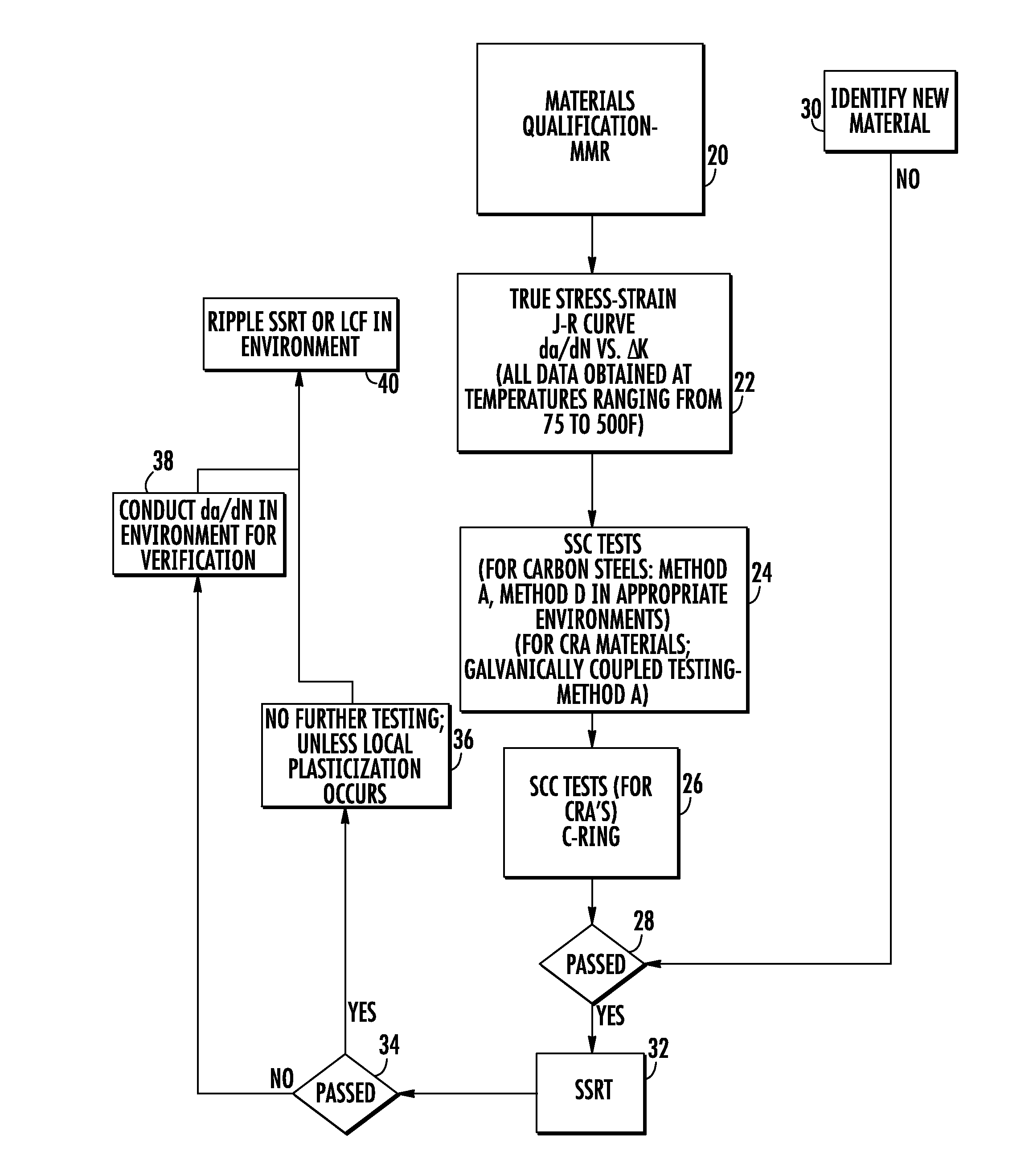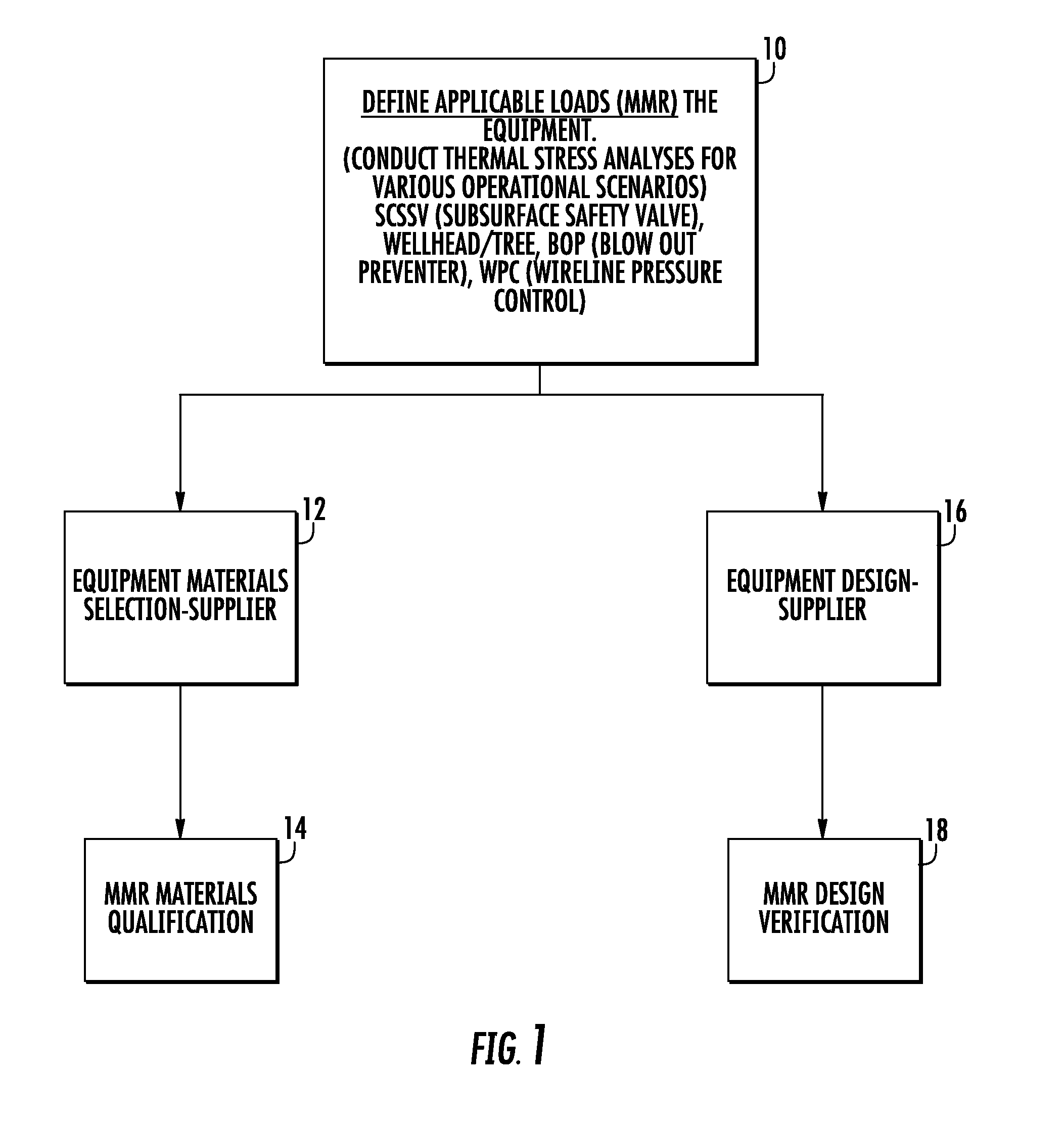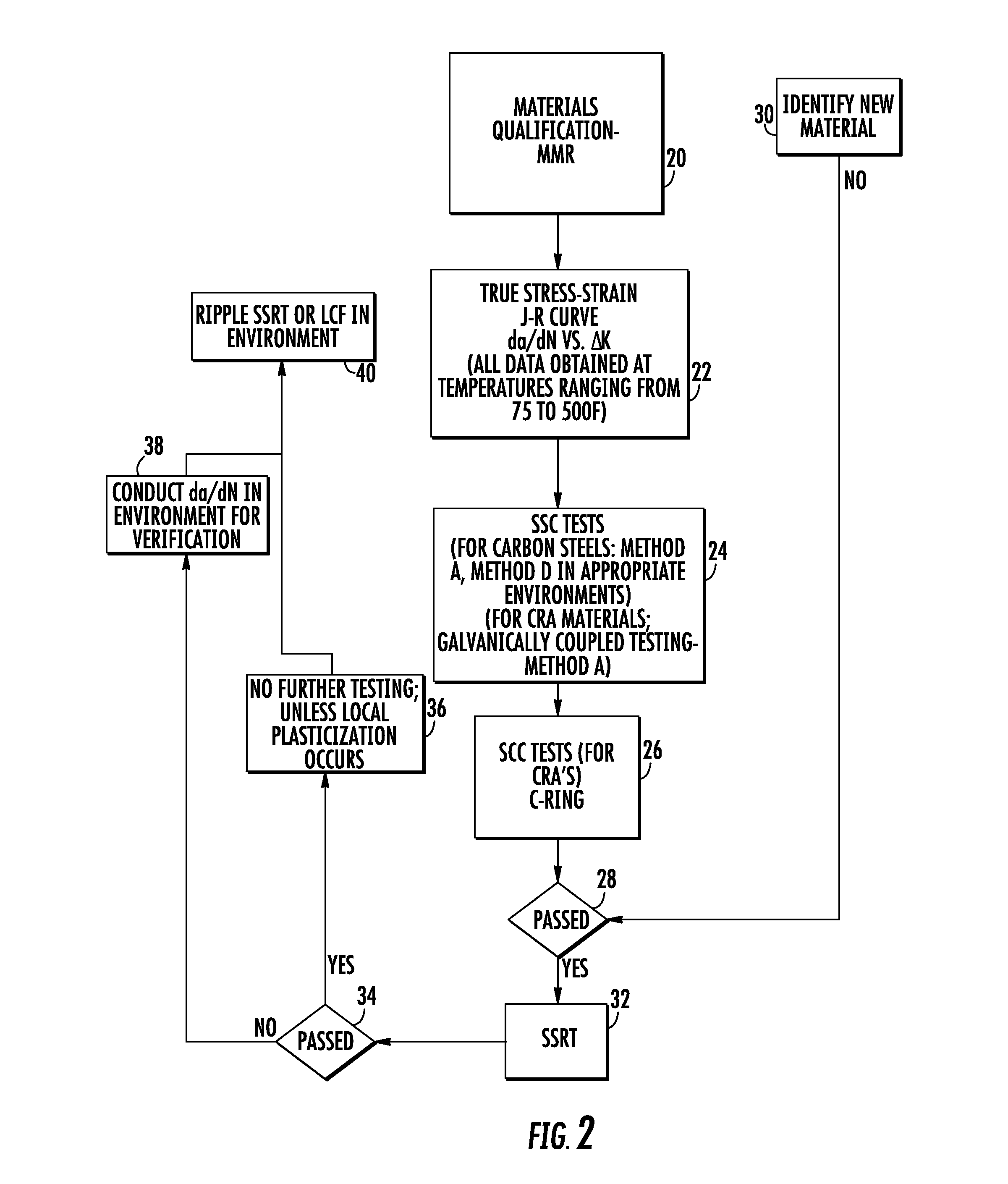Engineered methodology for design verification and validation of ultra-deep high pressure high temperature oil and gas well control equipment
a technology of design verification and validation, applied in the direction of sealing/packing, instruments, borehole/well accessories, etc., can solve the problems of equipment components being subjected to stress and load conditions
- Summary
- Abstract
- Description
- Claims
- Application Information
AI Technical Summary
Benefits of technology
Problems solved by technology
Method used
Image
Examples
Embodiment Construction
[0014]Reference is made to FIG. 1 showing certain preliminary considerations that relate to the use of the process described below in the construction and implementation of oil and gas equipment in the HPHT environment. As shown in step 10, the oil and gas equipment on which the design verification and validation process is used, in its preferred embodiment, are SCSSV's, wellhead trees, BOP's, WPC's and other well control equipment. As shown in step 12, the owner or operator of an HPHT well may desire to determine whether a supplier is providing materials to be used in the design and manufacture of oil and gas equipment that are suitable for the HPHT environment and to require that such supplier make proper selections of such materials. A supplier of such oil and gas equipment may also independently desire to use materials qualification processes for such purposes. In step 14, in some cases, materials may be selected by the owner or operator of the well for use in connection with th...
PUM
 Login to View More
Login to View More Abstract
Description
Claims
Application Information
 Login to View More
Login to View More - R&D
- Intellectual Property
- Life Sciences
- Materials
- Tech Scout
- Unparalleled Data Quality
- Higher Quality Content
- 60% Fewer Hallucinations
Browse by: Latest US Patents, China's latest patents, Technical Efficacy Thesaurus, Application Domain, Technology Topic, Popular Technical Reports.
© 2025 PatSnap. All rights reserved.Legal|Privacy policy|Modern Slavery Act Transparency Statement|Sitemap|About US| Contact US: help@patsnap.com



